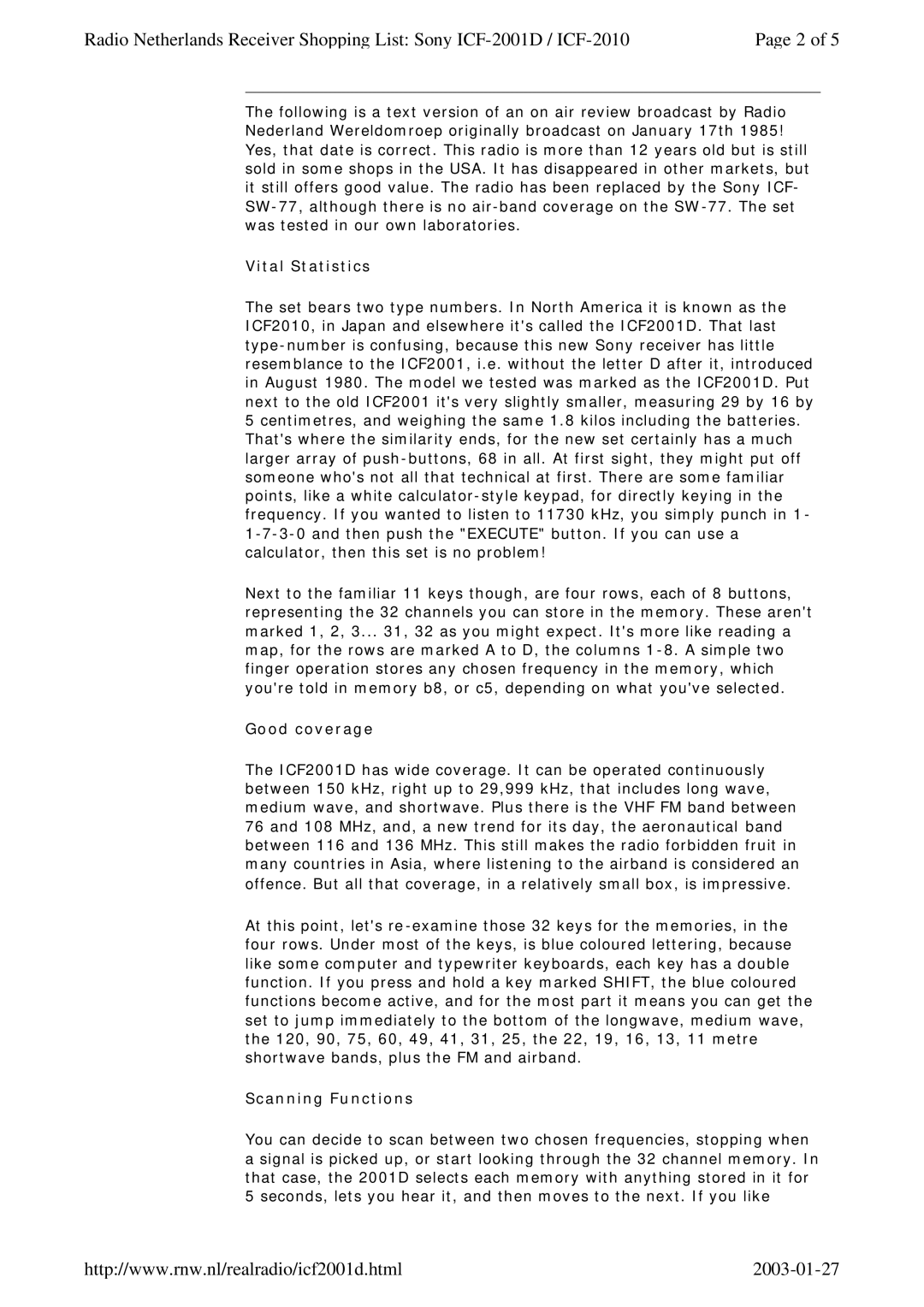Radio Netherlands Receiver Shopping List: Sony | Page 2 of 5 |
The following is a text version of an on air review broadcast by Radio Nederland Wereldomroep originally broadcast on January 17th 1985! Yes, that date is correct. This radio is more than 12 years old but is still sold in some shops in the USA. It has disappeared in other markets, but it still offers good value. The radio has been replaced by the Sony ICF-
Vital Statistics
The set bears two type numbers. In North America it is known as the ICF2010, in Japan and elsewhere it's called the ICF2001D. That last
Next to the familiar 11 keys though, are four rows, each of 8 buttons, representing the 32 channels you can store in the memory. These aren't marked 1, 2, 3... 31, 32 as you might expect. It's more like reading a map, for the rows are marked A to D, the columns
Good coverage
The ICF2001D has wide coverage. It can be operated continuously between 150 kHz, right up to 29,999 kHz, that includes long wave, medium wave, and shortwave. Plus there is the VHF FM band between 76 and 108 MHz, and, a new trend for its day, the aeronautical band between 116 and 136 MHz. This still makes the radio forbidden fruit in many countries in Asia, where listening to the airband is considered an offence. But all that coverage, in a relatively small box, is impressive.
At this point, let's re
Scanning Functions
You can decide to scan between two chosen frequencies, stopping when a signal is picked up, or start looking through the 32 channel memory. In that case, the 2001D selects each memory with anything stored in it for 5 seconds, lets you hear it, and then moves to the next. If you like
http://www.rnw.nl/realradio/icf2001d.html |
